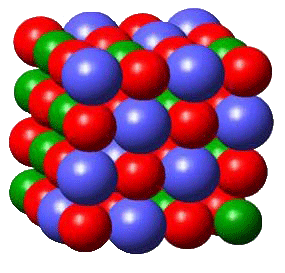The 3 States Of Matter On Flowvella
Key Takeaways Key Points • Matter can exist in one of three main states: solid, liquid, or gas. • Solid matter is composed of tightly packed particles. A solid will retain its shape; the particles are not free to move around. • Liquid matter is made of more loosely packed particles.
Download the latest driver, firmware, and software for your HP Deskjet 3051A e-All-in-One Printer - J611h.This is HP's official website to download drivers free of cost for your HP Computing and Printing products for Windows and Mac operating system. Hp deskjet 3051a software for mac.
It will take the shape of its container. Particles can move about within a liquid, but they are packed densely enough that volume is maintained. • Gaseous matter is composed of particles packed so loosely that it has neither a defined shape nor a defined volume. A gas can be compressed.

Kitchendraw 6.5 keygen for unlimited hours. Key Terms • liquid: A substance that flows and keeps no definite shape because its molecules are loosely packed and constantly moving. It takes the shape of its container but maintains constant volume. • gas: A substance that can only be contained if it is fully surrounded by a container (or held together by gravitational pull); a substance whose molecules have negligible intermolecular interactions and can move freely.
The Three States of Matter Objectives •Describe the properties shared by particles of all matter. • Describe three states of matter. • Explain the differences between. Students learned all about the three states of matter. Learning about matter the students need to identify the basic types of molecules: solid, liquid, and gas. The students learned about the size, spacing, and movement of these states of matter and needed to demonstrate their knowledge by creating a model of each.
• solid: A substance that retains its size and shape without a container; a substance whose molecules cannot move freely except to vibrate. The three states of matter are the three distinct physical forms that matter can take in most environments: solid, liquid, and gas. In extreme environments, other states may be present, such as plasma, Bose-Einstein condensates, and neutron stars. Further states, such as quark-gluon plasmas, are also believed to be possible. Much of the atomic matter of the universe is hot plasma in the form of rarefied interstellar medium and dense stars.
Historically, the states of matter were distinguished based on qualitative differences in their bulk properties. Solid is the state in which matter maintains a fixed volume and shape; liquid is the state in which matter adapts to the shape of its container but varies only slightly in volume; and gas is the state in which matter expands to occupy the volume and shape of its container. Each of these three classical states of matter can transition directly into either of the other two classical states.
The states of matter: This diagram shows the nomenclature for the different phase transitions. Solids A solid’s particles are packed closely together. The forces between the particles are strong enough that the particles cannot move freely; they can only vibrate. As a result, a solid has a stable, definite shape and a definite volume. Solids can only change shape under force, as when broken or cut. In crystalline solids, particles are packed in a regularly ordered, repeating pattern.
There are many different crystal structures, and the same substance can have more than one structure. For example, iron has a body-centered cubic structure at temperatures below 912 °C and a face-centered cubic structure between 912 and 1394 °C. Ice has fifteen known crystal structures, each of which exists at a different temperature and pressure. A solid can transform into a liquid through melting, and a liquid can transform into a solid through freezing. A solid can also change directly into a gas through a process called sublimation. Liquids A liquid is a fluid that conforms to the shape of its container but that retains a nearly constant volume independent of pressure.